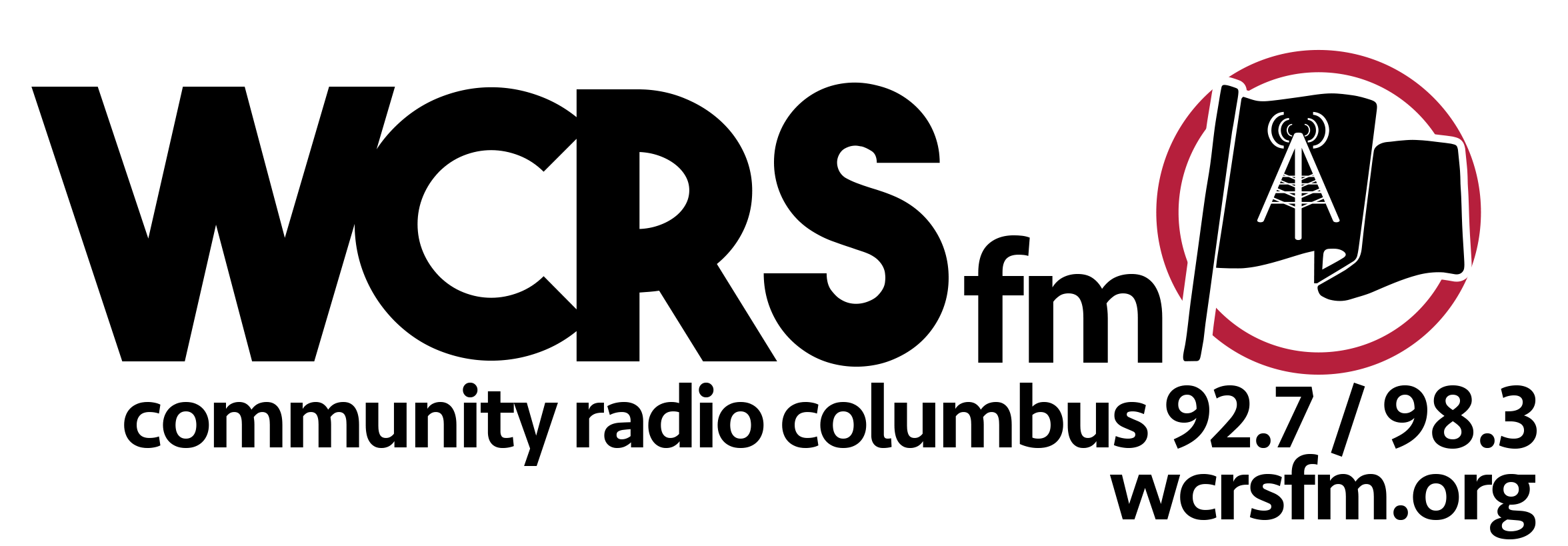How to Listen to WCRS
Listen Online
If you have issues with the player above click on either of the icons below to open the stream with a local player.Listen via FM radio at 92.7 and 98.3
Here are some reception tips for receiving our signal with a variety of radio receivers
By Eugene Beer, WCRS Chief Engineer,
eugene@wcrsfm.org
WCRS-LP broadcasts 24-7 on 92.7FM and is re-broadcast by a translator 98.3FM.
Here is a predicted coverage map for 92.7
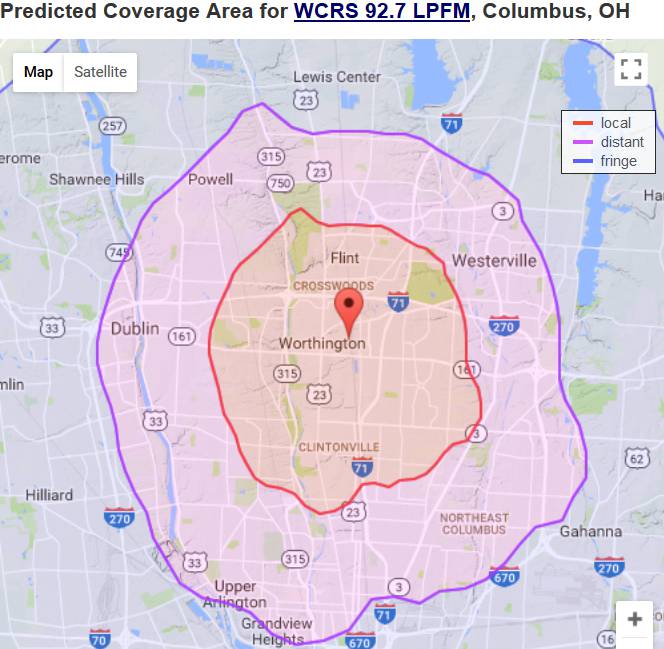
Predicted coverage for 98.3
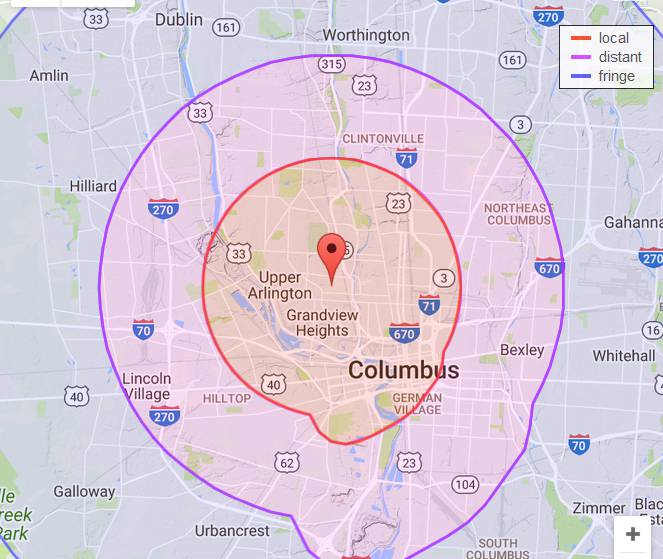
Why two frequencies for WCRS?
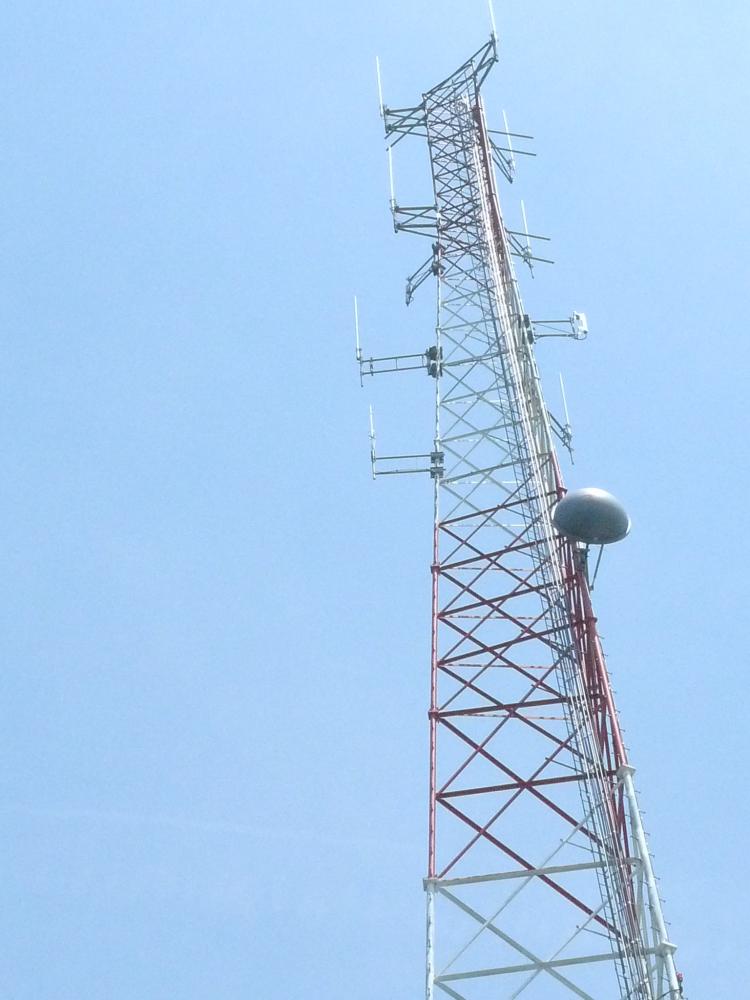 WCRS is licensed through the FCC (Federal Communications Commission) as a Low Power FM (LPFM) station with a radiative power of about 68 Watts. In comparison, large commercial FM stations have a power of 50,000 Watts or more. Consequently, WCRS is limited in range to about 7 miles as compared to 70 miles for the large full-power stations. The WCRS transmitter broadcasting at 92.7 FM is located near 161 and Proprietors Rd near downtown Worthington. Reception is best in the north side of Columbus and the northern suburbs such as Dublin, Powell & Worthington. Reception in central Columbus difficult due to the range limitation.
WCRS is licensed through the FCC (Federal Communications Commission) as a Low Power FM (LPFM) station with a radiative power of about 68 Watts. In comparison, large commercial FM stations have a power of 50,000 Watts or more. Consequently, WCRS is limited in range to about 7 miles as compared to 70 miles for the large full-power stations. The WCRS transmitter broadcasting at 92.7 FM is located near 161 and Proprietors Rd near downtown Worthington. Reception is best in the north side of Columbus and the northern suburbs such as Dublin, Powell & Worthington. Reception in central Columbus difficult due to the range limitation.
In 2007, WCRS was approached by The Columbus Institute for Contemporary Journalism who owns the FCC license for a translator or FM booster service in central Columbus at 98.3 FM. CICJ and Simply Living entered into an agreement that gives CICJ permission to simulcast the 102.1 signal on their transmitter at 98.3 FM. Broadcast of 98.3 of 92.7 has started in December of 2017. The signal at 98.3 FM is also low-power, although, because it is centrally located about 1 mile southwest of the OSU campus in the Grandview-University View area, the coverage for 98.3 FM includes much of the city inside I-270.
LPFM has an additional limitation imposed by the FCC in that our tower height is limited to about 100 ft (compared with 600-900 ft for full-power stations). This limitation has the effect that listeners at ground level in low-lying areas of the city may have difficulty receiving WCRS even within the 7-mile range. In such cases listeners can improve reception by using a radio on the second floor of their residence if possible.
 Problem reception locations in our coverage area
Problem reception locations in our coverage area
Reception can be difficult in steel and concrete buildings. It’s best to place your radio receiver near a window that’s facing towards the nearest of the two WCRS towers.
Reception inside homes is poorer in low-lying areas such as the Scioto and Olentangy River valleys (within ½ mile east and west of each river), although, from one's car, 98.3 reception should be perfectly fine all along 315 up to north I-270.
Downtown Columbus as well as the Short North and Victorian Village area are problem areas for reception of 98.3FM because of proximity to WNCI’s transmission antenna atop the Nationwide building. WNCI is the strongest FM station in Ohio at 185,000 Watts. Its frequency at 97.9 is very close to 98.3. In these areas to receive WCRS, a higher-quality radio receiver might be necessary or a rabbit ears antenna used to discriminate between WNCI’s and WCRS’ origination direction of transmission. If your radio is capable of tuning on even 0.1 MHz, then try receiving FM 98.3 by tuning to 98.4 MHz.
Look at the reception tips below for the type(s) of FM receiver you’ll be using to listen to WCRS.
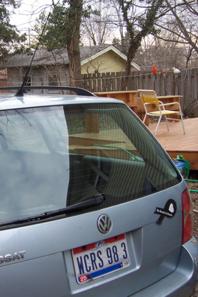 Car Radios
Car Radios
Car radios will provide excellent reception for WCRS. Set your presets to both 98.3 and 92.7 FM. In some situations, even though you might be closer to one tower, the signal from the other tower might be coming in stronger. As you drive along, you might hear occasional brief “swish-outs” of the signal. This is due to passing through nulls of the signal, caused by changes in terrain and building obstruction. When coming to a stop at a light or when parking, it’s possible that your car could be stopped right in the middle of a null. Usually, if you drive ½ wavelength (5 feet) forward, you’ll exit the null and the signal will improve.
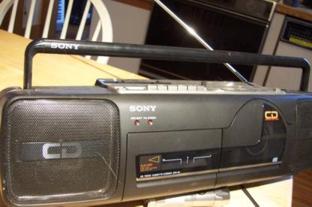 Boom box or any portable radio with an extendable rod antenna.
Boom box or any portable radio with an extendable rod antenna.
Extend the rod antenna about 2/3 of the way out and keep it that long. If the radio has an analog tuning dial, follow the instructions below for low-end radios, except move the rod antenna instead of the AC power cord. Try changing the elevation of the rod from horizontal (parallel to the ground) to vertical and all points in between. Also, with the rod at a 45 degree elevation or less, try rotating the rod in a big circular arc. If the rod isn’t made for rotating, rotate the radio itself.
If the boom box or radio has a tuner with digital readout, try tuning to 98.4 if possible, in order to reduce interference from 97.9 (WNCI — Ohio’s strongest FM station!!!).
 High-end table radio (like Bose Wave radio) with digital tuning readout.
High-end table radio (like Bose Wave radio) with digital tuning readout.
The Bose table radio has a very high quality FM tuner section that receives both our frequencies well. However, unless you hook up an external FM antenna to the jack in the back of the radio, the Bose uses the AC power cord for the antenna. Move the power cord around and tape it in the optimal position if necessary. The Bose will not tune to even frequencies (98.4) but its tuner has high enough selectivity that WNCI interference should not be a problem. The sound fidelity of the Bose is excellent, but it is a very expensive product and clear reception of WCRS can be obtained with much cheaper radios.
For other table radios with digital tuning, adjust the AC power cord as above and if WNCI interference is a problem, try tuning in 98.3 FM at 98.4 if the radio will allow.
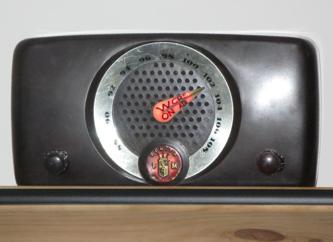 Low-end table radio or clock radio with analog tuning dial
Low-end table radio or clock radio with analog tuning dial
The lowest quality of these radios may not be able to receive 98.3 at all and may only get 92.7 within 3 or 4 miles of the tower. These radios also use the AC power cord for the antenna. For reception of 98.3 FM, first tune in WNCI at 97.9; then move the dial very slightly to the right just until WNCI starts to fade. Then move the AC power cord around until you (hopefully!) hear WCRS (then tape the cord in that position). Depending on the quality of the radio, it may not be possible to eliminate all bleedover from WNCI, especially if you’re located within 3 miles of the Nationwide building downtown where WNCI’s tower is.
For low-end radios, expect the usable reception range from the 92.7 or 98.3 FM towers to be less than ½ of that attainable with a car radio, Bose radio, or component stereo.
Component stereo system (where the FM section is in a receiver or separate tuner)
Component receivers or tuners usually have an external antenna connection on the back. The FM connection could be two screw terminals or two insertion binding terminals (two left-most terminals in photo) often labeled with the impedance of 75 or 300 ohms. The higher-end units will have a 75 ohm Coax connector (top photo). Most full-power radio stations in Columbus can be received inside I-270 with NO antenna hooked to the FM antenna terminals. WCRS, however, will require some kind of antenna, although in most cases it can simply be a 5 ft. length of any kind of wire such as speaker wire. (Increasing the length of the wire beyond 5 ft. will NOT improve reception and it may actually decrease it.)
For units with two screw or insertion connectors, the unit should have come with a wire dipole antenna. This is a T-shaped twin-lead wire about 3 ft long for both of the legs of the T (the vertical leg of the T could be longer). If you don’t have the dipole antenna, you can get one at Radio Shack for about $5. Connect the dipole to the screw or insertion terminals and stretch out the T along a wall with tape or tacks after finding the best position along the wall for clear reception of WCRS. The best orientation of the dipole might be to rotate it in the plane of the wall or to stretch it out in a plane perpendicular to the wall (one end of the top leg of the T will be anchored to the wall). It’s not always necessary to fully stretch out the T, so if you’re short on space, you can let it dangle or droop.
Almost as effective as a dipole (and cheaper) is to connect a 5-foot section of any type of wire to one of the screw or insertion terminals. Move the wire around and find the best position for reception of WCRS.
For $10-$20 you can get a rabbit-ears antenna from Radio Shack or Lowes hardware. This is better than the dipole antenna. Some of them come with leads for screw-on terminals and some come with a 75-ohm Coax connector. Radio Shack sells adapters that convert 75-ohm Coax connectors to 300-ohm screw-on leads and vice-versa.
If you’re too far from either of our transmitters, you may need to use a roof or attic yagi boom antenna to receive the station. These can be purchased for $40-$100 plus $20 for 50 ft. of lead-in cable. I’d recommend an FM-only one, but you could also use a combination TV-FM antenna. If you don’t have access to your roof or attic, you can still install a small FM-only boom antenna in a room by securing it on a floor-standing pole mount and raising the antenna to about 6 inches away from the ceiling. Rotate the antenna so it’s pointed towards our closest transmission tower. Unlike TV combo antennas the FM-only ones are flat in a horizontal plane, and thus will fit nicely near the ceiling of a room without poking the eyes out of tall people. If your residence is not in a low-lying area, a rooftop antenna could receive WCRS up to 20 or 25 miles away.
Portable pocket-sized personal stereo with earphones (like Walkman or mp3 player with FM tuner).
Personal stereo devices use the earphone cord for the FM antenna. Because people are usually on the go with them, the earphone cord can’t be taped down to an optimal position to receive 92.7 or 98.3. When walking or jogging with them expect “swishing” of the WCRS signal as the earphone cord bounces around. However, when stationary, these devices can pick up our stations quite well. Expect the usable reception range from the 92.7 or 98.3 FM towers to be roughly ½ of that attainable with a car radio or component stereo. Also, personal stereo devices probably won’t get 98.3 FM within 2 miles of downtown because of the interference of WNCI at 97.9 FM; try tuning to 98.4 FM if the device allows even frequency selection.
Here is a handy How-To Make an Antenna to Better Pick Up WCRS (Thanks to Mike in Columbus)
Take a piece of speaker wire... the kind with two wires stuck to eachother parallel... You'll need 28 inches exactly.
seperate one end and pull the wires apart. You now have two wires exactly 28 inches long. It's important that you have two that are exactly the same length, 28 inches will tune it to about 98 mhz. Strip one end of each wire after they are cut.
Now take a piece of coax cable (cable tv wire) long enough to get from your window to your radio. If your radio has a coax input then cut off ONE end of the coax. If your radio has screw terminals cut off BOTH ends.
Strip an end of the coax and take the braided shield and twist it out so that you can twist it onto one of the 28" wires. Strip the center conductor and twist it onto the other 28" wire. Make sure the center conductor is not touching the other wire or braided shield! For best results you can solder these, of course, but you don't have to.
Now, you have a long T with a coax coming out of the center. Put that thing up in your window, or really wherever is handy to hang it. Run the coax over to your radio and plug it in. Either just screw the coax on (like my radio) or cut the end off and screw the braid onto one screw terminal and the center conductor onto another.
Now you can play with the orientation of the two 28" wires for best results at your dwelling.
Listener Reception Reports
We at WCRS welcome reception reports from listeners. We will compile a list of radio receivers that are known to perform well at receiving the station. Please email your reception reports to comments@wcrsfm.org. When reporting, please let us know the following information:
- Reception surroundings (outdoors, wood-frame house, brick house, building including what floor height)
- Radio type (as categorized above)
- Listening location (Clintonville, Hilltop, Linden, Bexley, Upper Arlington, Short North, Campus, etc)
- Unusual weather conditions? (heavy precipitation, fast-changing weather with wind and temp change)
- Reception quality using 5-point scale below
5 - Signal is clear with minor swishing if in a moving car
4 – Signal is somewhat noisy including moderate swishing in a car, but spoken sentences can be understood even if a word or two is occasionally lost
3 - Signal is quite noisy with some of the broadcast not being understandable although most of it is
2 - Just a trace of the signal is heard, but enough to identify male/female host, or music/speech programming
1- No signal is heard or other commercial station signals are heard
- Login to post comments
